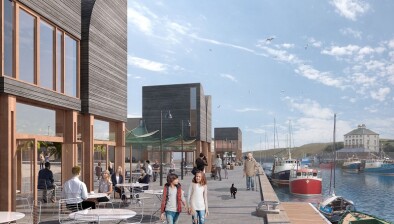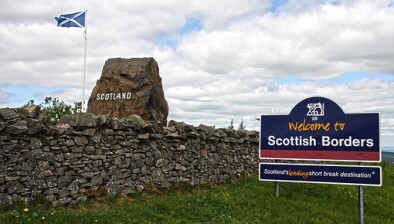Planning permission granted for new Hawick footbridge

Plans for a new footbridge in Hawick linking Hamilton Road with Weensland have taken a major step forward this week as planning permission for the crossing was granted.
The new four-metre wide, 60-metre long structure will be a major addition to the Hawick Active Travel Network which is currently being developed and will also include a 6.5km traffic-free route for people to walk, wheel and cycle.
Once connected, the footbridge will link into a section of the soon to be created network at Weensland Biodiversity Park with options to head left up to Weensland Road or right towards Oliver Park.
As a result of the construction of the new structure, the current roundabout at Hawick Rugby Football Club will be reconfigured to a T-junction with a new plaza area being created and a section of active travel route installed weaving up Hamilton Road to join Waverley Walk.
The crossing is being funded by Transport Scotland’s ‘Places for Everyone’ fund in partnership with Sustrans and is being delivered alongside the town’s Flood Protection Scheme.
Following on from the approval of planning permission, the project will now enter a detailed design phase, with procurement to take place next year.
To date three footbridges in the town have already been replaced as part of the wider Hawick Flood Protection Scheme project.
Scottish Border Council’s executive member for environment & transport Jenny, Linehan, said: “The approval of planning for this new footbridge crossing the Teviot between Hamilton Road and Weensland is another significant and important development as part of the wider Hawick Active Travel Network.
“Along with the other footbridges that have been replaced and the active travel paths, this new crossing will significantly enhance the infrastructure of Hawick, meaning residents can travel across the town more easily and do so in a safe manner.
“I am hopeful the new footbridge will encourage residents and visitors to travel more actively for everyday journeys which is not only good for our physical and mental health but benefits the environment too.”

















